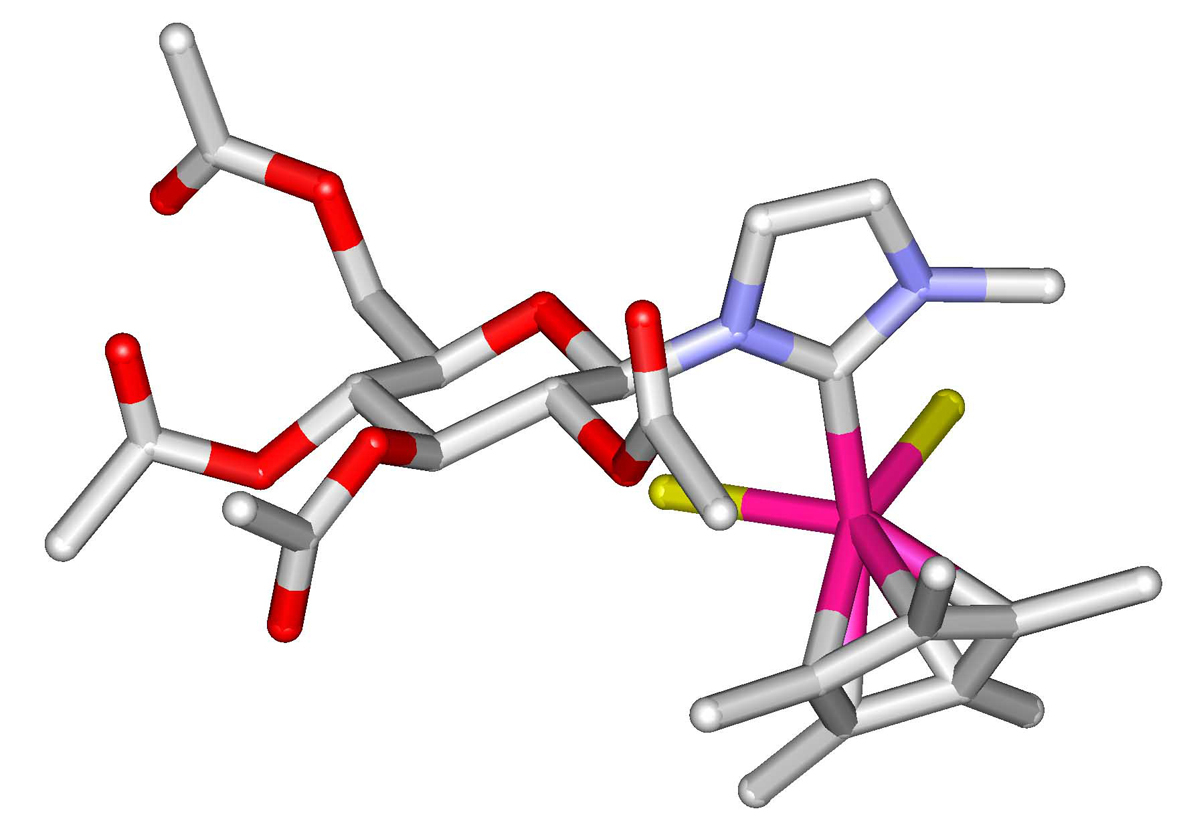Research topics of Nishioka
Research on sugar-introduced metal complexes
Transition metal complexes have been used as catalysts and pharmaceuticals. Typical examples are the asymmetric catalyst Ru-BINAP complex and the anticancer drug cisplatin. Sugar is an optically active substance with high water solubility and plays an important role in biological systems. My research unit has pursued synthesizing new functional complexes by introducing a sugar moiety into an N-heterocyclic carbene (NHC) ligand that can strongly bind to a metal ion with high catalytic activities. We have developed a novel method to introduce the sugar moiety into metal complexes as a substituent group of the NHC ligand. We have also succeeded in synthesizing palladium complexes with a sugar-introduced tridentate ligand and clarified that these complexes exhibit high catalytic activity in the Suzuki-Miyaura cross-coupling reaction in aqueous media.

Research on multi-nuclear metal complexes with multi-electron redox ability
There are many interesting multi-electron reactions in nature. Reduction of carbon dioxide in photosynthesis, oxidation of water, and nitrogen fixation reaction by nitrogenase are familiar examples. In addition, bond formation and cleavage are essential reactions for substance transformation, and multiple active sites are required for molecular activation. From this point of view, we have conducted synthetic research with new multi-nuclear metal complexes, thereby creating molecular catalysts with multi-electron redox ability and multiple reaction active points. So far, we have newly synthesized a mixed metal complex with a triple crosslinked sulfide ligand and elucidated the catalytic ability of the complexes for electrochemical reduction of substrates.
